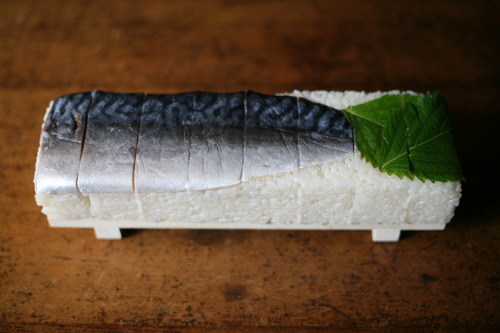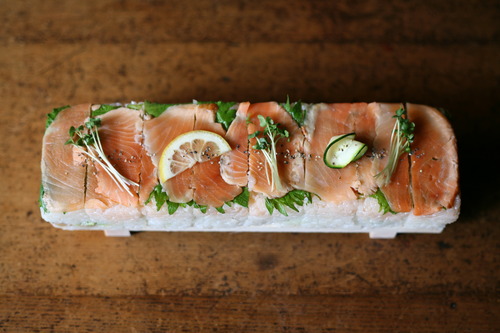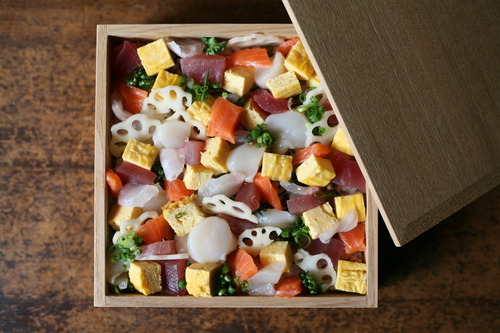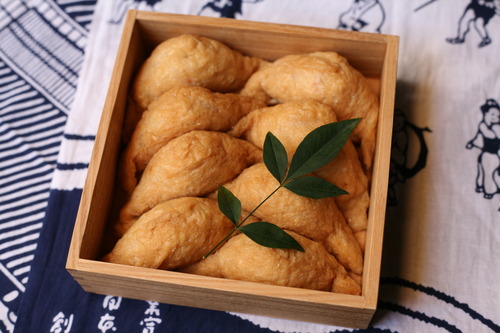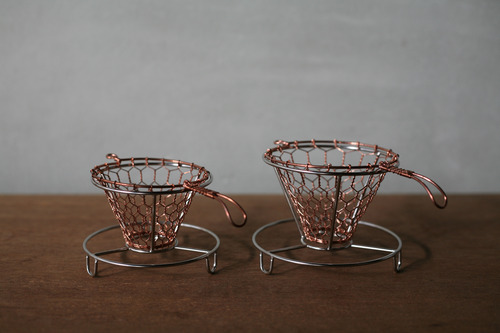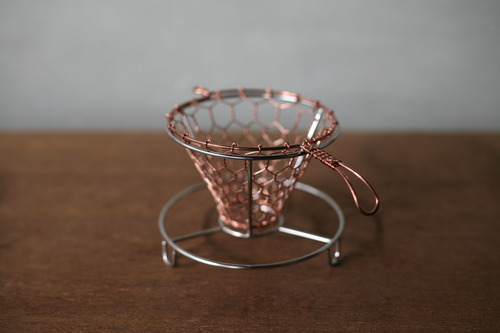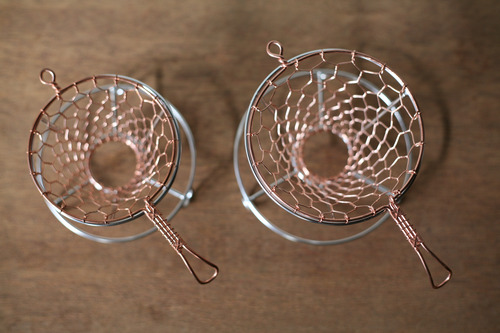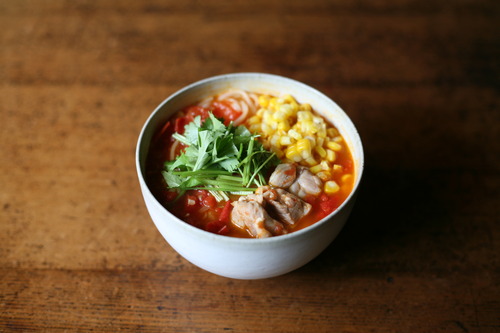
[Udon Noodles with Tomato and Chicken Soup]
Chang'an (now Xi'an), the capital of the Tang Dynasty, was the center of world trade, and has a rich food culture. Our staff, who has been living in Japan for about 11 years since she left that place, bring us many ideas every day.
We made this udon noodles with tomato and chicken soup based on a YouTube video she showed us on the way home yesterday. It has salt, Chinese chili bean sauce, and fried garlic and ginger. It tasted wonderful and we finished it in no time.
The fact that we can create such different tastes with ingredients that are found in every household is the reason why people say that "cooking is magic."
[Ingredients (for 2 people)]
Udon noodles (we used Inaniwa udon) 2 servings
2 medium size tomatoes
Chicken thighs, as needed
1 sprig of ginger
1 clove of garlic
1 tbsp of chicken soup stock
A pinch of salt
A pinch of soy sauce
A pinch of black pepper
Moderate amount of water
Oil, to taste
One-half of corn
A pinch of coriander
[Directions]
Cut the tomatoes into small pieces with a knife.
Finely chop ginger and garlic.
Boil the corn and remove the kernels from the core. Finely chop the coriander. Cut the chicken into bite-sized pieces.
Saute ginger and garlic in oil in a frying pan over low heat to release their aroma.
When the color changes, add the tomatoes and saute further.
When it comes to a boil, reduce the heat to medium-low and simmer for a while.
Add chicken soup stock, salt, and black pepper to taste.
Boil the udon in a separate pan. After boiling, drain and reheat in boiling water.
Put the udon and soup into a bowl and top with corn and coriander.
Seiryugama's Donburi
https://www.shokunin.com/en/seiryu/donburi.html
Reference (Video)
https://youtu.be/aTWb51P3j-8
